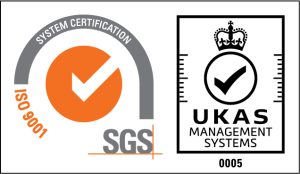
A Deep Dive into Splunk Mission Control and TIM: Unlocking the Power of Incident Response
Author: Jack Hancox
Release Date: 30/08/2024
In today's fast-paced digital landscape, cybersecurity incidents are not a matter of "if," but "when." The ability to swiftly detect, investigate, and respond to these incidents is paramount in safeguarding organisations against potential threats. Enter Splunk Mission Control – a powerful platform designed to streamline incident response processes and empower security teams to effectively mitigate risks. Alongside Mission Control stands Threat Intelligence Management (TIM), providing critical insights to bolster defence strategies. In this blog post, we'll explore the key insights shared during one of our recent webinars on Splunk Mission Control and TIM.
Understanding Incident Management with Mission Control and TIM:
Mission Control serves as the nerve centre for incident management, offering a centralised hub where security professionals can orchestrate their response efforts. The platform enables seamless integration of data from various sources, providing a comprehensive view of each incident's scope and severity. TIM complements Mission Control by delivering real-time threat intelligence, enriching incident data and enhancing the accuracy of response actions.
Navigating Incident Workflows
The journey begins with the identification of a potential security incident. Whether triggered by a correlation search within Enterprise Security, alternative security analytics tools or manually created, each incident is assigned a unique identifier and categorised based on type, status, and priority. Mission Control provides default response playbooks, simplifying the initial steps of case creation and investigation. TIM enriches incident data with contextual threat intelligence, empowering analysts to make informed decisions from the outset.
Initiating Investigations
Upon selecting an incident for investigation, security teams are presented with a detailed summary containing relevant information such as incident type, status, and associated response runbooks. From there, investigators can delve deeper into the incident's specifics, leveraging advanced search functionalities to explore related events and notable occurrences. TIM supplements investigative efforts by providing insights into the tactics, techniques, and procedures (TTPs) of potential threat actors.
Building a Comprehensive Picture
Mission Control facilitates a granular examination of incidents, allowing users to analyse recent events, notable occurrences, and associated data points. By aggregating disparate information into a unified interface, security professionals can identify patterns, assess potential threats, and make informed decisions. TIM enriches incident data with threat intelligence feeds, enabling analysts to correlate findings and uncover hidden connections.
Collaborative Case Management
To enhance collaboration and knowledge sharing, Mission Control enables the creation of cases to group related incidents. This feature streamlines the process of collecting evidence, documenting findings, and coordinating response actions across multiple stakeholders. TIM fosters collaboration by providing a central repository for sharing threat intelligence insights, ensuring that all team members have access to the latest information.
Conclusion: Empowering Incident Response
In conclusion, Mission Control and TIM represent a paradigm shift in incident response, offering a holistic approach to managing cybersecurity incidents. By leveraging advanced analytics, automation, and collaboration tools, organisations can effectively mitigate risks, minimise downtime, and safeguard their digital assets. If you're interested in learning more, you can watch the full webinar here.







